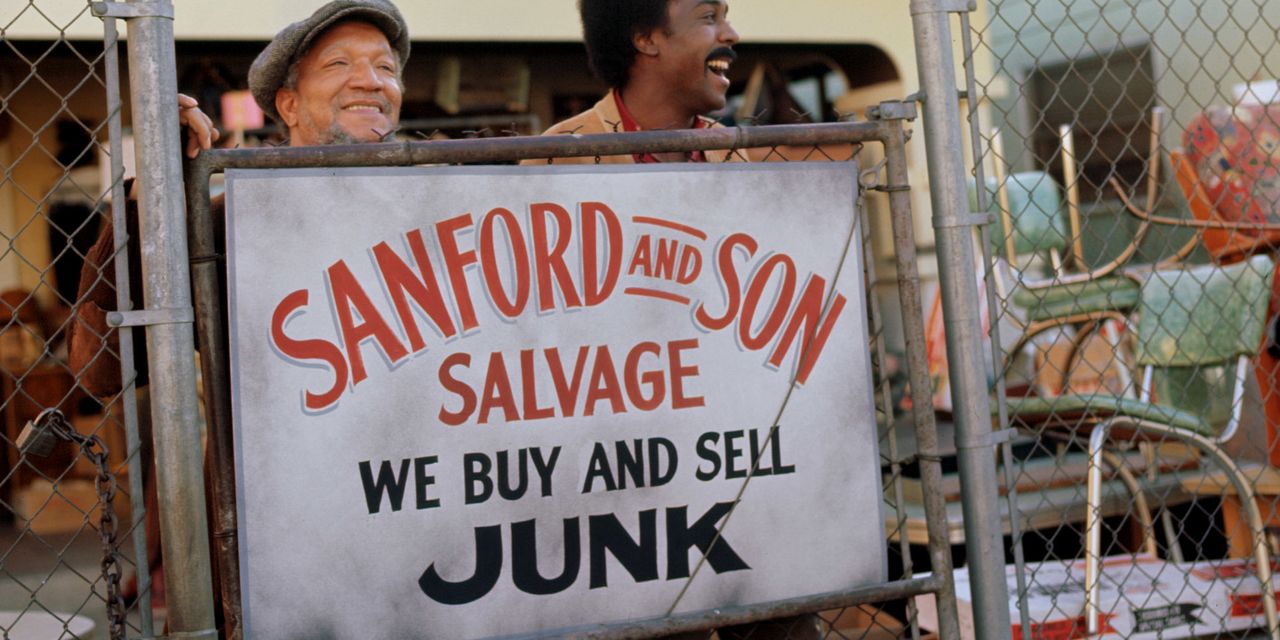You should be worried that junk-bond investors aren’t worried.
Consider the narrow spread that exists currently between the yields on junk bonds and U.S. Treasurys of comparable maturities. This so-called junk spread is a sensitive measure of what junk-bond investors collectively believe is the additional risk they incur relative to investing in Treasurys. As you can see from the accompanying chart, this spread currently is well below its average since 1997 — indicating that junk-bond holders think the risk they face is below average.
That’s remarkable, since the balance sheets of junk-bond issuers are already strained by the jump in interest rates over the past year and a half. That means they have little cushion to weather a recession, which remains very much a possibility even if that risk appears to have lessened in recent weeks. A recession would almost certainly push many of these vulnerable borrowers into bankruptcy.
You might object to my assertion that we should worry when the junk-bond market is not. The junk-bond market presumably is very efficient, which would mean that all (or almost all) publicly available information has been incorporated and discounted into current prices. Isn’t it dangerous to think we know more than the market does?
Read: Everyone on Wall Street loves bonds. Are bonds too popular?
In most cases I wouldn’t bet against the judgment of the market. But in this case, the low spread levels in the past were more often than not followed by higher ones, and vice versa. This mean-reverting character of the junk-bond spread suggests that it is a good contrarian indicator: It is a good time to bet the spread will soon widen when it is well-below average. Now is one of those times.
This historical tendency is summarized in the accompanying table.
| Average change in spread next 3 months | Average change in spread next 6 months | Average change in spread next 12 months | Average change in spread next 24 months | |
| 33% of months since 1997 in which junk spread was narrowest | +0.3 percentage points | +0.5 percentage points | +1.0 percentage points | +2.7 percentage points |
| 33% of months since 1997 in which junk spread was widest | -0.3 | -0.6 | -1.4 | -2.8 |
A good illustration of the pattern summarized in the table is the situation that prevailed two years ago when the spread, like now, was much narrower than average. As I wrote at the time, this suggested the spread would soon widen. And it did, nearly doubling from its July 2021 low to its July 2022 high — from 3.02% to 5.99%. Contrarians wouldn’t be surprised by something similar over the next year or two.
“ Risk in the economy is most likely greater than what junk-bond investors are assuming. ”
There are several different strategies you could pursue if you agree with this contrarian analysis. A simple one would be to avoid the junk-end of the bond-quality spectrum, staying at or close to the investment-grade end of that spectrum. A more involved strategy for betting on the junk spread’s widening would be to go long Treasurys and short junk bonds.
Regardless, the broader message of this contrarian analysis is that risk in the economy is most likely greater than what junk-bond investors are assuming.
Mark Hulbert is a regular contributor to MarketWatch. His Hulbert Ratings tracks investment newsletters that pay a flat fee to be audited. He can be reached at mark@hulbertratings.com
More: Fund managers are less bearish than they’ve been in more than a year, says Bank of America, wiping out a buy signal
Also read: Risky bonds are facing a ‘maturity wall’ that could sow more panic in markets
Read the full article here













Leave a Reply